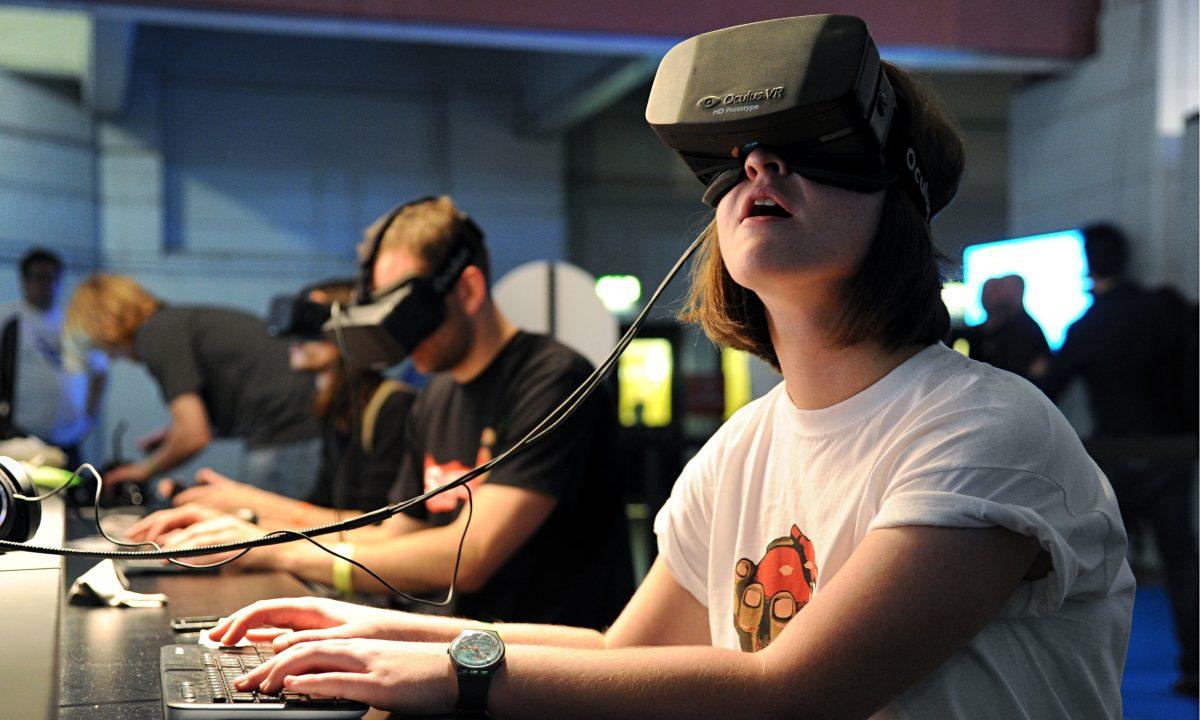Virtual reality (VR) and augmented reality (AR) were only dreams just a few years ago. Jump to the present and consumers can find multiple VR technologies available at the consumer level. The Oculus Rift will be out within the next few days and Sony’s “PlayStation VR” will soon begin accepting pre-orders for its release in October. But can VR and AR really make a dent in the video game industry?
To answer this question we first need to look at what VR and AR are. For that, we will examine the two most popular devices in each category – the Oculus Rift, produced by Oculus VR, and Microsoft’s upcoming AR device, the HoloLens.
The Oculus Rift uses a head-mounted display, which fully encases your eyes, and built-in headphones to surround you in the virtual environment. Using an organic light-emitting diode (OLED) screen that doesn’t use a backlight (like most screens) users are brought into a virtual world where they can play video games, look at full-body scans of medical patients or even travel to different parts of the world, all from the comfort of their home.
The HoloLens on the other hand, uses augmented reality, meaning that it uses virtual elements that appear visually in the environment around you. While it has similar hardware to both the Oculus Rift and Playstation VR, the AR HoloLens allows you to continue seeing your physical surroundings, opting instead to add virtual elements that appear in the real-world environment. Instead of watching Netflix on your television, for example, you can watch it on an empty wall. You can also use Windows 10 right in your kitchen through multiple surfaces, or play a game of “Minecraft” on your dining room table.The Microsoft HoloLens is still currently in development with a developer kit coming out later in the month.
Gaming is the bread and butter of VR and, to an extent, AR. Games like Blizzard Entertainment’s “World of Warcraft” bring players together into a fantasy world. Adding VR optimization to these games, though, would not only allow players to interact with the world, but also live in it. They can be there in a first person perspective and interact with their friends from the game just as if they were really there, while also participating in combat with one-to-one motion controllers. First-person games like Valve’s “Half-Life” or Microsoft’s “Halo” franchises will make players look and aim their weapons at enemies using these motion controls instead of normal hand-held controllers.
The opportunities are endless.
But keeping VR and AR in the bubble of gaming will only limit its scope, there are more uses that can help those in need or even to create structures.
There are groups like the Institute for Creative Technologies at University of Southern California that are using the Oculus Rift to help soldiers with their Post Traumatic Stress Disorder by putting them back into the battle zone to help with the disorder.
UK company Virtalis uses VR to digitally construct apartment buildings, aircraft engines and even submarines. The technology is used to reduce errors on projects by allowing designers to strap on an Oculus Rift and see the projects as if they were really there.
Augmented reality headsets could also be sent to schools with software that would put students into their history lessons. They could watch the Great Pyramids be built right before their eyes or witness Michelangelo create his marble statue of the biblical hero David.
It will take a few years still for virtual and augmented reality to really hit it off with the general public, mostly due to the initial price point for most of the devices being around $500 to $800 and hardware requirements requiring high-end computers to run them. But as the technology develops and becomes cheaper, more industries will pick up VR and AR to create and help more people in the world.
– Featured image: Virtual and augmented reality where orignally made for the video game industry. But as time has pasted other industries have taken to the technology. – Photo courtesy of Flickr user Bago Games
For comments/questions about this story, email [email protected] or tweet @TheWhitAE.
























































































































































!["Working with [Dr. Lynch] is always a learning experience for me. She is a treasure,” said Thomas. - Staff Writer / Kacie Scibilia](https://thewhitonline.com/wp-content/uploads/2025/04/choir-1-1200x694.jpg)









































